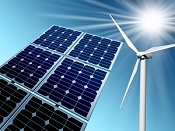The ALP has put a lot of thought and work into it’s climate policy. A pity, therefore, that the links to the documentation are not better organised. Here to assist readers are the main links I’ve discovered:
The main policy document: Climate Change Action Plan Policy Paper (41 pages)
An 18-page factsheet: Labor’s Climate Change Action Plan Factsheet
A site Labor’s Climate Change Action Plan, where if you follow the links you can get to the Policy Paper and the Factsheet, but in the main you are directed to short summaries of the policy under six key areas. If, however, you follow the links in a way that is not immediately obvious, you get to the more adequate versions below:
When I googled I got this site, which has a fine introduction and rationale, but when you get near the end you realise it’s a discussion paper, written earlier in the process. There are no links except to Labor’s Positive Policies site, which I suspect is a sundry bunch of draft materials. On climate change there is only a renewable energy link, and it’s not the final paper.
Whoever is responsible for Labor’s web documentation needs to have another look at how policy papers are accessed.
The only article I’ve read so far that actually linked to the correct documentation is John Englart’s Can Labor wedge the Coalition on #climatechange in #ausvotes2016? at Climate Citizen. Englart’s piece is long but I’d suggest it’s the best. While you are there, John Hewson has a short piece where he puts the Turnbull Government’s climate change policies into context, accuses Greg Hunt of “blatant hypocrisy”, tells how Howard in 2013 finished up “admitting that he remained an “agnostic” on climate, preferring to rely on his “instincts”. Hewson himself when leader in the early 1990s called for a 20% cut in emissions by 2000, off a 1990 base.
Below I outline the main elements of the Labor policy under the headings they chose.
Renewable energy economy
Labor will:
- Ensure that at least 50 per cent of the nation’s electricity is sourced from renewable energy by 2030;
- More certainty and flexibility with less red tape and more technology options for the Clean Energy Finance Corporation;
- Invest $206.6m in ARENA to support a specific Concentrated Solar Thermal funding round;
- Invest $98.7m to establish a Community Power Network and Regional Hubs; and
- Ensure the Federal Government leads by example as a direct purchaser of renewable energy.
In short under Abbott/Turnbull Australia has been losing jobs in the renewable energy sector while the world has been forging ahead.
The Community Power Network is interesting in that it will seek to bring renewable energy solutions to community housing, rental properties and apartment-style living.
Cleaner power generation
Labor will:
- Ensure the National Electricity Market meets the needs of 21st century consumers through an Electricity Modernisation Review;
- Develop a long-term plan to ensure the orderly transition of Australia’s energy generation from polluting coal-fired power stations to renewable and clean energy, with a core focus on supporting workers and communities; and
- Implement an electricity emissions trading scheme.
The Electricity Modernisation Review will begin before the end of 2016 and report within 12 months with a focus on the National Electricity Market (NEM) and its framework, plus the transition away from coal-fired power.
The electricity emissions trading scheme will operate within the electricity generation industry implementing the model proposed by the Australian Energy Market Commission, which, according to the AEMC, will operate “without a significant effect on absolute price levels faced by consumers”.
Build jobs and industry
This is about setting up a Strategic Industries Taskforce to undertake in-depth engagement with emissions intensive, trade exposed (EITE) industries to ease their way into a broadly-based emissions trading scheme from 2020. Labor will establish a Strategic Industries Reserve Fund with an initial funding profile of $300m over three years to support the ongoing competitiveness of strategic industries during Australia’s transition to a low-carbon economy.
Cut pollution
An emissions trading scheme (ETS) will be introduced in two distinct phases.
- The first phase is designed to get Australia’s pollution levels back under control and to establish the architecture for an enduring ETS. The second phase will then drive the long-term transition in our economy.
The first phase, from 2018 tom 2020 will cover entities emitting more than 25,000 tonnes of carbon per year. Each will be given a cap appropriate to meet the 5% emissions reduction target. Emissions below the cap will be free, above the cap they can be met by purchasing international offsets approved under the UN’s Clean Development Mechanism or Australian offsets approved through mechanisms like the Carbon Farming Initiative (CFI).
After 2020 the caps will be reduced each year to meet our international obligations under the Paris Agreement. The Climate Change Authority will be retained to give independent advice.
Capture carbon on the land
Labor plans to reinvigorate the Carbon Farming Initiative, but the main thrust is to achieve national standards for land and tree clearing permissions and for reporting arrangements. This will involve reinvigorate the COAG National Vegetation Management Framework.
Increased energy efficiency
Labor will:
- Double Australia’s energy productivity by 2030;
- Introduce new emissions standards for motor vehicles to reduce emissions in the transport sector;
- Support policies that reduce per capita environmental impacts in our cities, including more efficient building design and public transport systems; and
- Broaden Infrastructure Australia’s role to include new assessment criteria of smart infrastructure and sustainability.
Climate Targets
I’d agree with Englart’s comment on targets:
-
On climate targets Labor are sticking with a 45 per cent emissions reduction on 2005 levels by 2030, consistent with advice from the Climate Change Authority. This is double the current 26 to 28 per cent target by 2030 of the Coalition Government. But it is really the bare minimal target and still be on a 2 degree C emissions reduction pathway. Almost certainly it is too little for Australia’s equitable share for 1.5C pathways.
Reaction and commentary
The Turnbull government responded with a dishonest scare campaigm, claiming, for example, that electricity prices would rise by 78%. Lenore Taylor gives six reasons why the Government campaign is wrong.
The Business Council of Australia praised the policy, saying that
- the plan could provide a platform for bipartisanship and “build a bridge” for an emission trading scheme.
Lenore Taylot points out that the ETS is similar to the one Frontier Economics’ Danny Price designed for Turnbull and Nick Xenophon back in 2009, which Turnbull said was a ‘cheaper, greener, smarter scheme’ than Kevin Rudd’s.
And Price a recent Government appointee to the Climate Change Authority has said:
- the Coalition would probably have to move to a similar scheme itself in order to meet its own emissions reduction targets.
The Climate Institute was encouraging, saying:
- The emission reduction targets and the focus on a more orderly transition to clean energy announced by the ALP today are important steps towards credible climate policy.
They also saw the possibility of bipartisanship.
Ben Eltham at New Matilda said nice try but no cigar. He said it was politically sound, but inadequate when measured against what the science requires.
The Australian Greens believe, as do I, that we should head for 350 ppm of CO2, and consequently need negative net emissions within a generation.
I don’t think, however, that the public is ready for the necessary action. Given the current political realities, the Labor policy, contra Eltham, is better than the superficially more elegant policy devised by the Gillard government with the Greens and independents. Consequently the ALP policy constitutes a smoother, more consultative, and more politically realistic transition from where we are now to where we need to go.
I also think that if they implemented their policy from 2016 to 2019 a Coalition government would be more likely to build on the policy than unpick it.
The policy has been criticised for being silent on coal mining, oil and unconventional gas.
John Englart goes into the reaction and coverage extensively, including by green groups and NGOs.
Here’s the ABC.
The MSM tended to pick bits a pieces of the policy and to repeat LNP scare lines. The Daily Telegraph excelled itself:

They are disgusting.


I made a few minor editorial changes to the post this morning. Posting last thing at night when tired has its problems.
Brian: It is all a bit disappointing.
Surely Labor should be smart enough by now to realize that an electricity ETS will not provide investor certainty unless they believe that there is durable support from both sides of politics. Particularly so given the success of the ACT Labor Government’s Renewable auction scheme. (Apart from providing investor certainty the ACT system gives much lower price increases compared with an ETS.)
While changing transport emissions standards will get rid of some of the worst polluters I do think that Labor should also be considering the use of Offset Credit Trading to drive down the average emissions per km of new cars as well as encouraging retro-fits for existing cars. Unlike standard changes this approach encourages car manufacturers to try and reduce emissions from all cars.
John, there’s a problem with your first link. I had a crack at fixing it, but it didn’t work.
John, probably the Labor policy boffins talk to economists rather than engineers!
Perhaps we reveal a problem with the representatives we have to choose from.
How many Engineers in parliament or high advisory positions ?
( please any responses to the SS to not derail this thread )
Brian: Try this link
Thanks, John. I’ve repaired the link in the original comment.
It’s an important post, which I’d forgotten about. But as I said elsewhere last night (forgetting which thread I was on) the architects of Labor’s policy may have been aiming for bipartisanship by using an idea that was obviously acceptable to Turnbull years ago.
Unfortunately Turnbull sold his soul to gain the leadership and continues to do so in the interests of Coalition harmony and winning an election. In fact leadership is a thing he doesn’t display.
John D.: When we do not want a bipartisan approach to an issue, we are harmed and alarmed by bipartisan support for this or that stupid, short-term policy in support of it.
When we really do need an enduring bipartisan approach to an issue, there is none to be found.
A incredible lack of a long-term bipartisan approach to renewable energy is a egregious example the lack of leadership in Australia’s political game-players.
Is this the Lucky Country or the Clever Country? Or is it the Dumb-Bunnies’ Country?